Overview
The article serves as an authoritative guide on effectively requesting a demo of a land digitization system. It underscores the significance of clearly defining objectives, gathering essential documentation, and preparing pertinent questions. By delineating specific steps—such as identifying key pain points, documenting current processes, and engaging stakeholders—the article guarantees that the demo request aligns with organizational needs. This alignment facilitates informed decision-making, ultimately driving the audience towards actionable insights.
Introduction
Navigating the complexities of land digitization presents a formidable challenge for organizations that seek both efficiency and accuracy. It is essential to understand how to effectively request a demo of a land digitization system, as this is crucial for aligning technological solutions with specific operational needs.
What are the key steps to ensure that this demo not only meets expectations but also addresses the unique challenges your organization faces? By grasping these elements, organizations can take decisive action towards enhancing their operational capabilities.
Define Your Objectives for the Demo
Before you request a demo of the land digitization system, it is essential to clearly define your objectives. Consider the following steps:
- Identify Key Pain Points: Assess the specific challenges your organization faces in land digitization. Are you aiming for faster processing times, enhanced accuracy, or improved data management? Understanding these pain points is crucial for of land digitization system to meet your needs. As Miro Miroslavov states, "A SMART goal is a goal that’s specific, measurable, achievable, relevant, and time-bound."
- Set Measurable Goals: Establish clear, quantifiable objectives, such as reducing document processing time by 30% or increasing data retrieval speed. For instance, a goal could be to "reduce paperwork processing time by 25% over the next six months." Measurable goals not only guide your evaluation but also help in assessing the effectiveness of the proposed solutions.
- Prioritize Features: Compile a list of the most critical features for your organization, such as machine learning capabilities, user interface design, or seamless integration with existing systems. This prioritization will assist you in concentrating on what is most important during the presentation.
- Document Your Objectives: Write down your goals and objectives to refer back to during the presentation. This documentation ensures that you remain focused on your targets throughout the presentation, facilitating a more productive discussion.
By following these steps, you can maximize the value of your presentation experience and ensure that when you request demo of land digitization system, it aligns with your organization’s needs. Furthermore, staying informed about current trends in land digitization technology adoption can further enhance your approach.
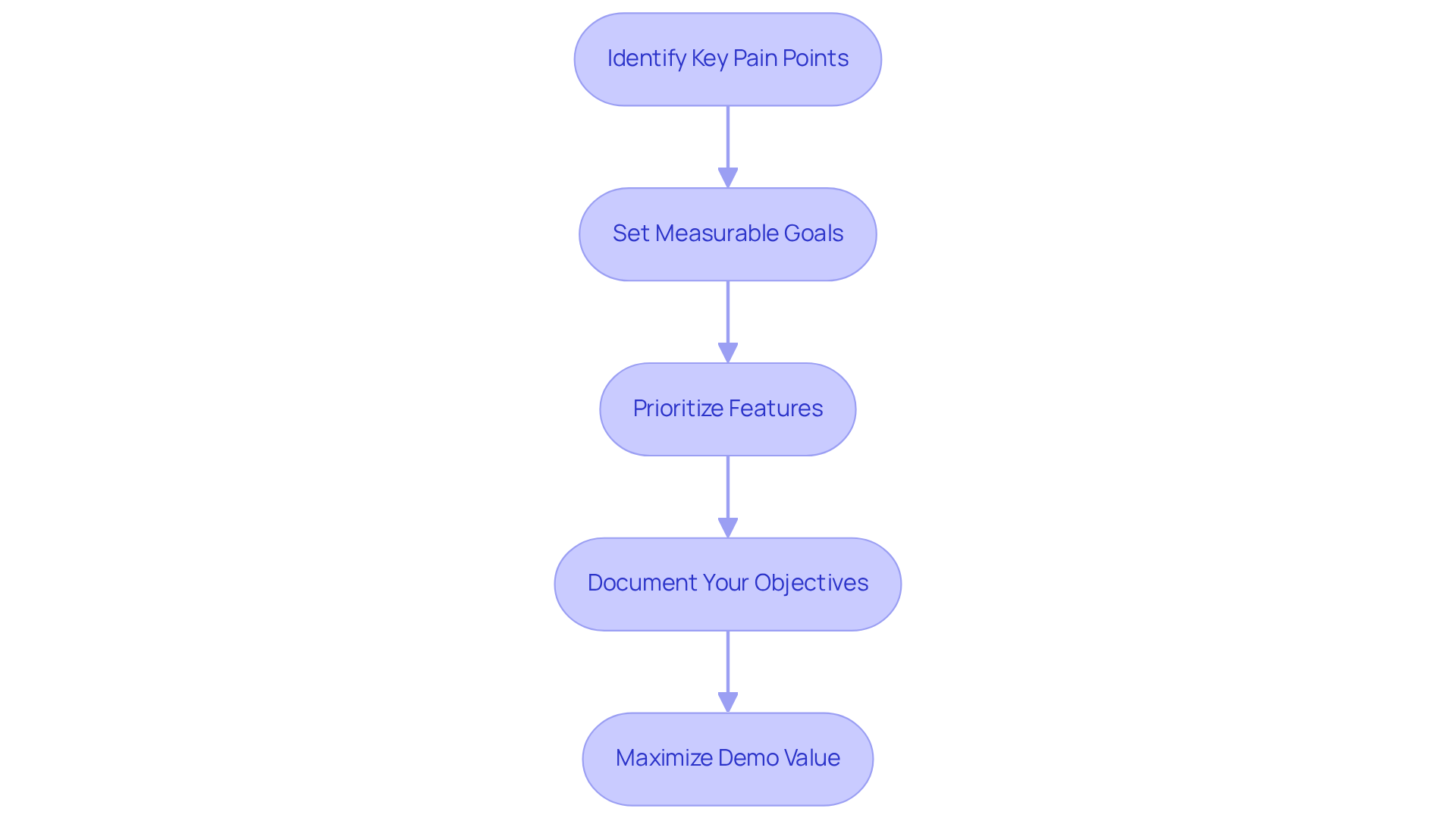
Gather Necessary Documentation and Information
To effectively prepare for your request demo of land digitization system, it is crucial to gather comprehensive documentation and information that will facilitate a productive discussion with the demo provider.
- Current Processes: Thoroughly document your existing workflows related to land digitization. This involves outlining any software tools presently in use, as comprehending these processes is essential for customizing the presentation to your specific needs. Research indicates that organizations that clearly outline their workflows are better positioned to leverage new technologies effectively. As noted by experts, digital transformation is essential for survival in today's business landscape, making this documentation even more critical.
- Data Samples: Prepare sample documents or datasets that exemplify the types of information you typically manage. Supplying these samples enables the presenter to understand your operational needs and customize the presentation accordingly.
- Stakeholder Input: Engage with team members who will use the platform to gather their feedback. Their perspectives are crucial in molding the presentation to tackle particular issues or needs, ensuring that the outcome aligns with user expectations. Jeff Bezos emphasizes that in today’s era of volatility, there is no other way but to re-invent, highlighting the importance of incorporating user feedback in the preparation process.
- Technical Requirements: Compile a list of any technical specifications or integration needs that must be considered. This encompasses compatibility with current infrastructures or data formats, which is crucial for a smooth shift to the new framework. Remember, at least if they don’t change to accommodate new technologies, underscoring the urgency of thorough preparation.
By carefully preparing this documentation, you not only improve the effectiveness of the presentation but also enable your organization to make informed decisions when you request a demo of the land digitization system. The necessity of digital transformation is evident, as organizations that fail to adapt risk obsolescence, as highlighted in various case studies.
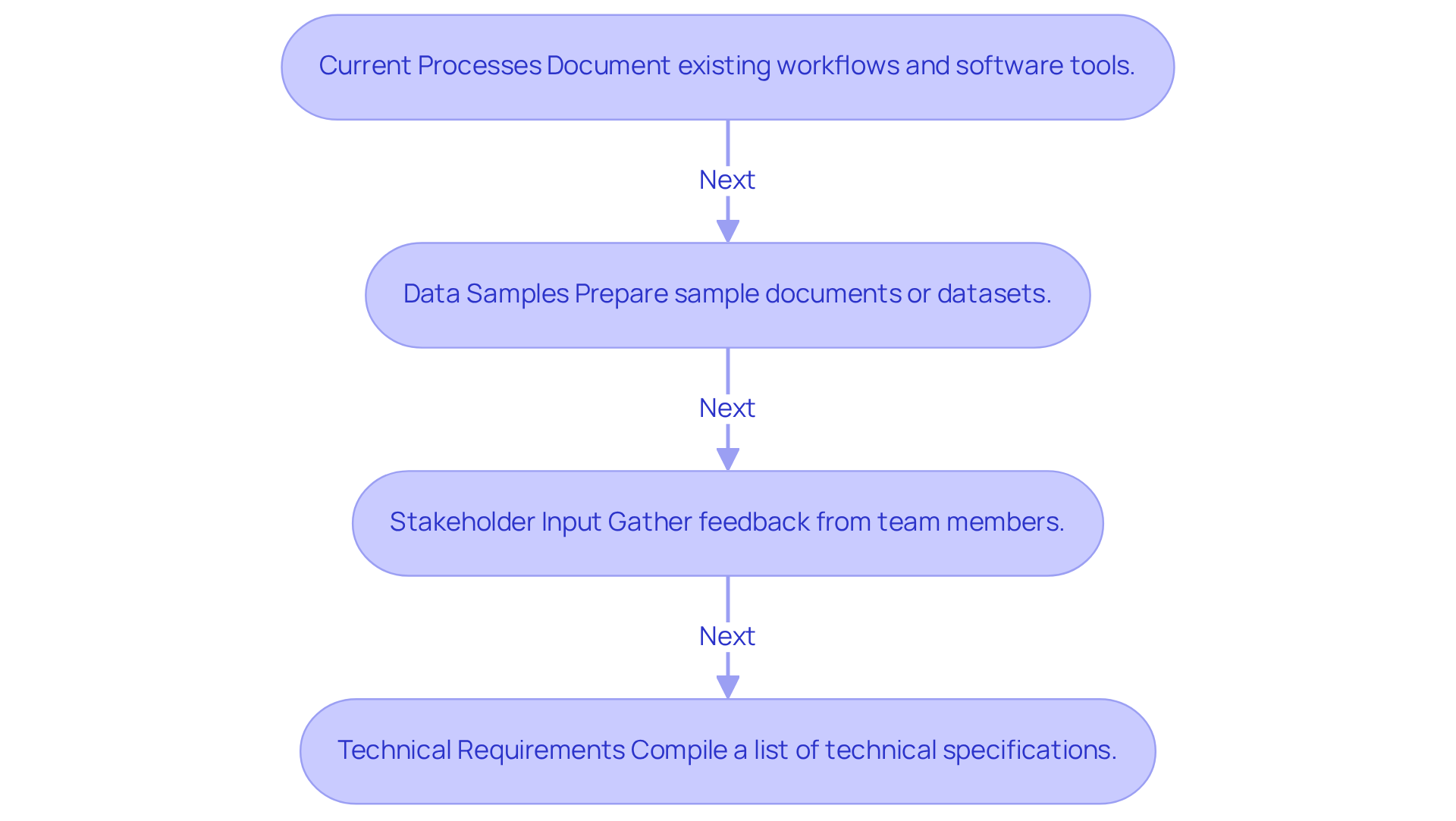
Contact the Service Provider for the Demo Request
To effectively request a demo of your land digitization system, follow these structured steps after defining your objectives and gathering the necessary documentation:
-
Choose the Right Contact Method: Select the most suitable way to reach out, whether through email, phone, or a contact form on the provider's website. Email is frequently the favored option for detailed inquiries, enabling clarity and document attachment.
-
Craft a Clear Message: Your message should be concise yet informative, including:
- A brief introduction of your organization to establish context.
- Specific goals for the presentation, outlining what you hope to accomplish.
- Any relevant documentation that supports your request, such as project outlines or previous correspondence.
- Proposed dates and times for the presentation to assist with scheduling.
- A strong call to action, encouraging the provider to confirm the demonstration.
-
Utilize a 'Request a Demo' Landing Page: If available, use the provider's landing page for demonstrations. This page should optimally contain three to five fields to gather essential information, simplifying the process for you to submit your inquiry and for the provider to respond effectively.
-
Follow Up: If you do not receive a response within a few days, send a polite follow-up message. This not only verifies that your inquiry was received but also showcases your interest and dedication. Studies indicate that timely follow-ups can increase engagement rates by up to 30%.
Creating impactful presentation inquiry messages is essential; examine instances from successful firms that emphasize clarity and intention. For example, a well-organized appeal might express, 'We are seeking to simplify our title research process and would value a request demo of land digitization system to examine its features.'
By following these best practices, such as implementing a strong call to action and a well-organized landing page, you can increase the chances of a successful request and ultimately enhance your organization's operational efficiency.
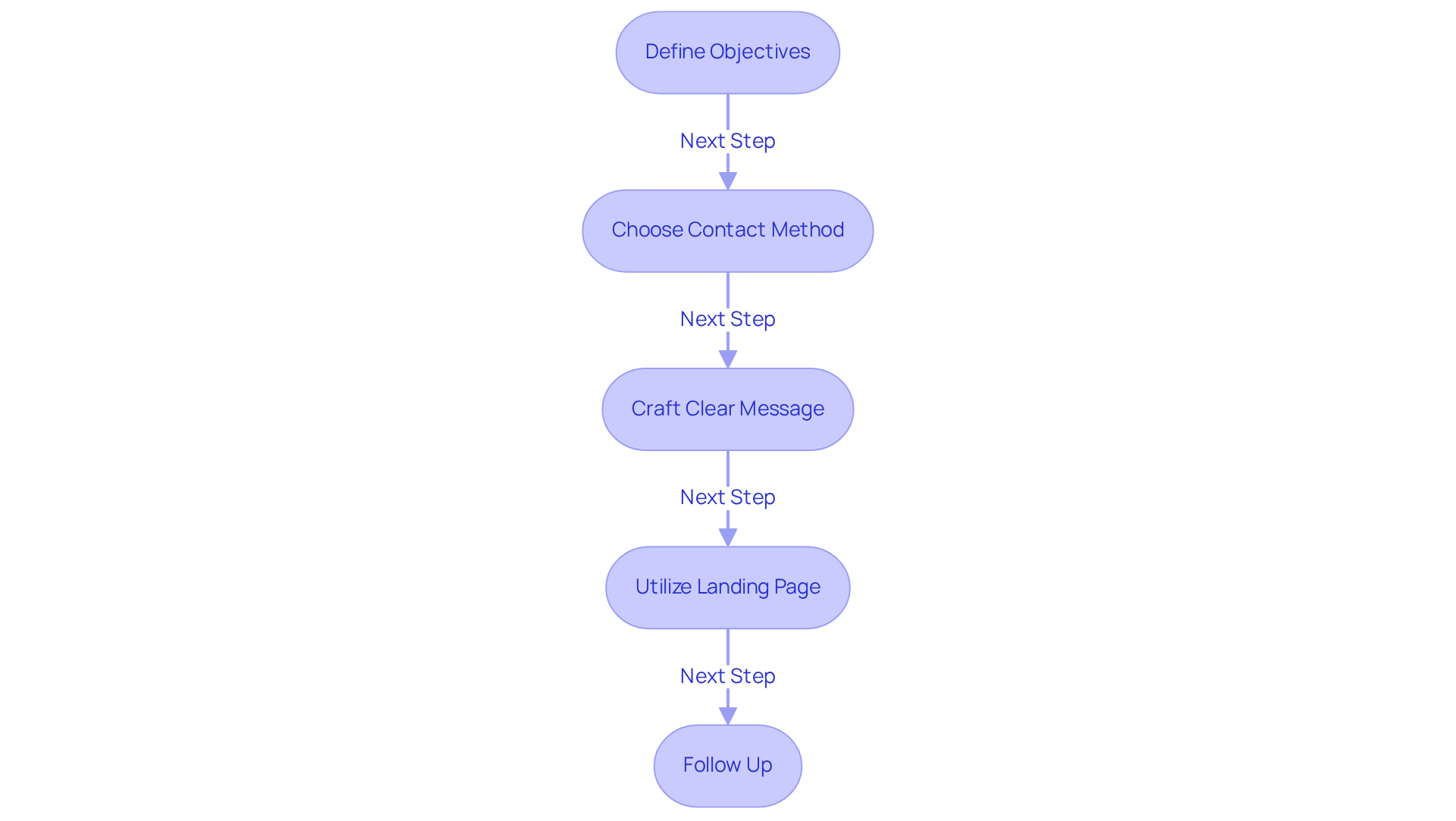
Prepare Questions and Discussion Topics for the Demo
To maximize the effectiveness of your demo, preparing a comprehensive list of questions and discussion topics that focus on key functionalities and integration capabilities is essential.
- Functionality Questions: Inquire about specific features that align with your objectives. For instance, ask, 'How does your framework manage data extraction from different document types?' This question will assist you in grasping the framework's capabilities in processing various title documents.
- Integration Queries: Discuss how the platform connects with your current tools and workflows. A pertinent question could be, 'Can your solution integrate with our current title management software?' Understanding this aspect is vital for seamless operations, given that are a common hurdle for title research professionals.
- Support and Training: Address the support and training options available after implementation. Questions like, 'What training resources do you provide for new users?' will clarify how the provider ensures user proficiency and ongoing support.
- Customization Options: Explore the potential for adapting the setup to meet your unique needs. For example, ask, 'Can we customize the dashboard to display the metrics that matter most to us?' This inquiry will reveal the system's flexibility in adapting to your specific requirements.
By preparing these focused questions, you can ensure that the presentation offers valuable insights into how the software can enhance your title research processes.
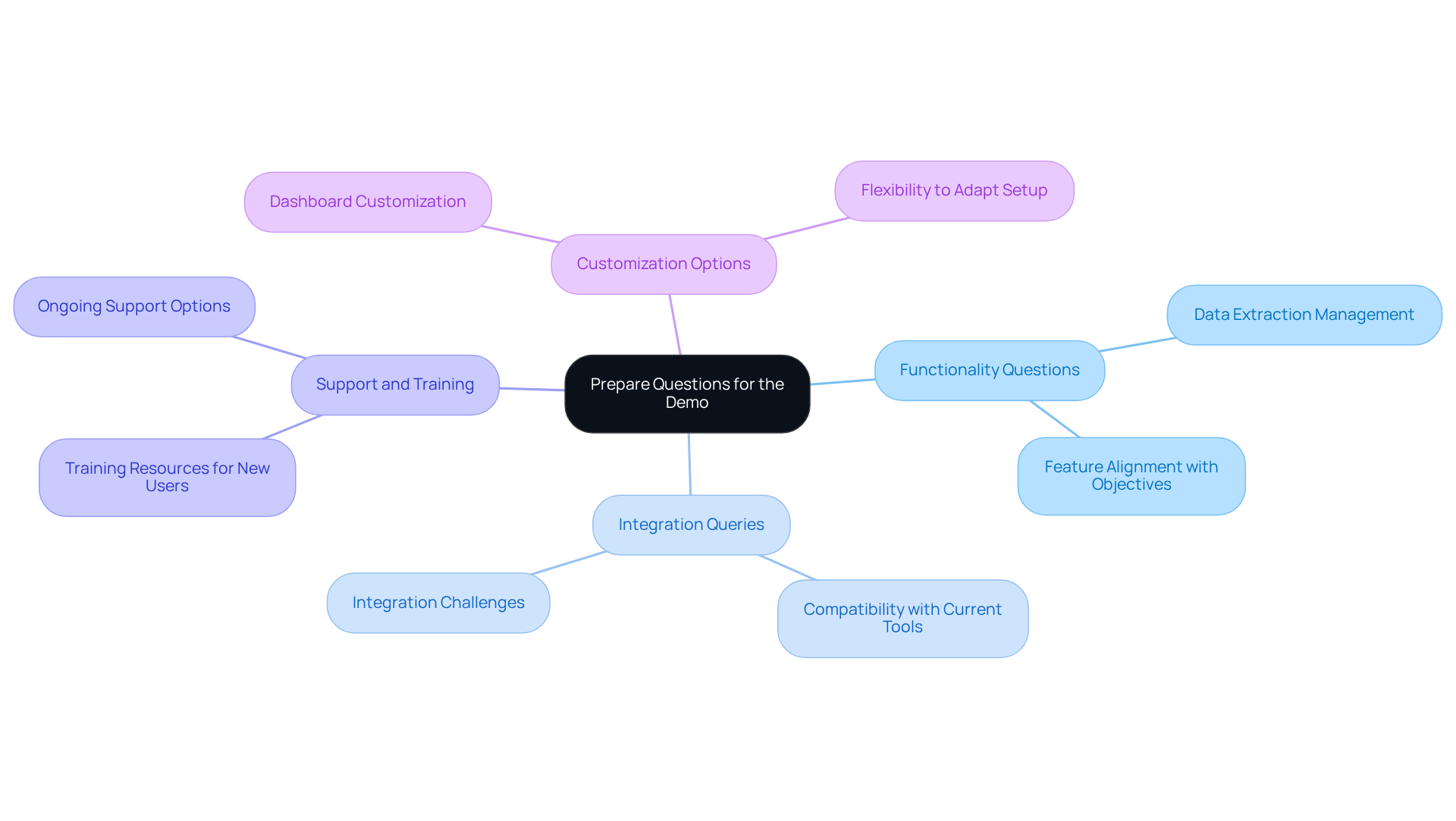
Evaluate the Demo Experience and Next Steps
After the demo, it is crucial to thoroughly evaluate the experience to ensure informed decision-making.
- Review Your Objectives: Assess how the demo outcomes align with the objectives established beforehand. Did the answer meet your expectations and requirements?
- Gather Feedback: Engage your team in a discussion to collect their impressions and insights. What aspects did they find beneficial, and where do they see room for improvement? This is vital, as it can reveal perspectives that may not have been considered individually. As noted by Forrester, "85% of enterprises are pursuing multi-model strategies," highlighting the importance of gathering diverse feedback in decision-making processes.
- Identify Next Steps: If the answer intrigued you, consider how to request a demo of the land digitization system to outline the subsequent actions. This could involve arranging a follow-up meeting, or discussing pricing options, as well as the opportunity to request a demo of the land digitization system to enable a deeper exploration of the approach.
- Document Your Findings: Maintain a comprehensive record of your evaluation, noting both the strengths and weaknesses of the solution. This documentation will serve as a valuable reference for future decision-making processes, ensuring that all insights are captured and can inform subsequent discussions. A structured feedback process can significantly enhance the effectiveness of your evaluations, as demonstrated in various case studies.
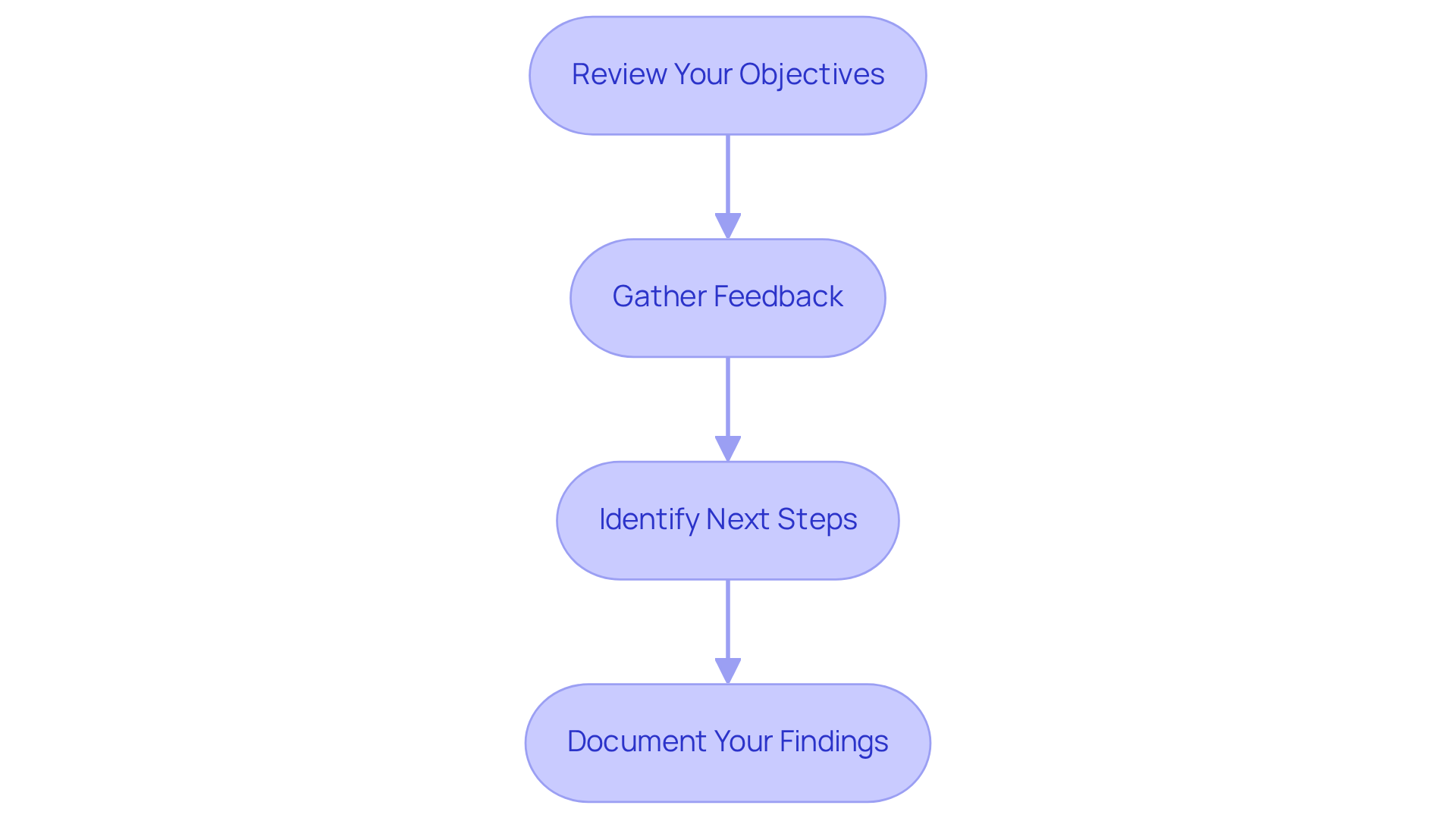
Conclusion
Articulating the process for requesting a demo of a land digitization system is essential for organizations seeking to enhance operational efficiency. By clearly defining objectives, gathering necessary documentation, and preparing targeted questions, stakeholders can ensure that the demo closely aligns with their specific needs and challenges. This structured approach maximizes the value derived from the presentation and facilitates informed decision-making moving forward.
Throughout this article, key strategies have been outlined, including:
- The identification of pain points
- The setting of measurable goals
- The documentation of objectives
Furthermore, the importance of gathering input from team members and understanding technical requirements has been emphasized. By adhering to these steps, organizations can effectively communicate their needs to service providers, ensuring that the demo yields relevant insights and solutions tailored to their requirements.
Ultimately, the success of a demo request hinges on thorough preparation and active engagement. Embracing digital transformation is not merely a trend; it is a necessity for remaining competitive. Organizations must take proactive steps to request demos that not only showcase potential solutions but also foster a deeper understanding of how these systems can revolutionize their land digitization processes. Engaging with providers thoughtfully and strategically can pave the way for significant advancements in efficiency and productivity.
Frequently Asked Questions
What should I do before requesting a demo of the land digitization system?
Before requesting a demo, you should clearly define your objectives by identifying key pain points, setting measurable goals, prioritizing features, and documenting your objectives.
How can I identify key pain points for land digitization?
Assess the specific challenges your organization faces in land digitization, such as the need for faster processing times, enhanced accuracy, or improved data management.
What are measurable goals, and why are they important?
Measurable goals are clear, quantifiable objectives, such as reducing document processing time by a certain percentage. They are important for guiding your evaluation and assessing the effectiveness of the proposed solutions.
How should I prioritize features for the demo?
Compile a list of the most critical features for your organization, such as machine learning capabilities or seamless integration with existing systems, to focus on what is most important during the presentation.
Why is it important to document my objectives?
Documenting your goals and objectives ensures that you remain focused during the presentation and facilitates a more productive discussion.
What documentation should I gather to prepare for the demo?
You should gather documentation on your current processes, data samples, stakeholder input, and technical requirements to facilitate a productive discussion with the demo provider.
How can I document my current processes effectively?
Thoroughly outline your existing workflows related to land digitization, including any software tools currently in use, to help customize the presentation to your specific needs.
Why is stakeholder input important in preparing for the demo?
Engaging with team members who will use the platform helps gather their feedback, ensuring that the presentation addresses specific issues or needs and aligns with user expectations.
What technical requirements should I consider when preparing for the demo?
Compile a list of technical specifications or integration needs, including compatibility with current infrastructures or data formats, to ensure a smooth transition to the new system.
Why is thorough preparation essential for requesting a demo of the land digitization system?
Thorough preparation enhances the effectiveness of the presentation and enables your organization to make informed decisions, as failing to adapt to new technologies can lead to obsolescence.




